
How to Use Seeed Studio XIAO ESP32C3: Examples, Pinouts, and Specs
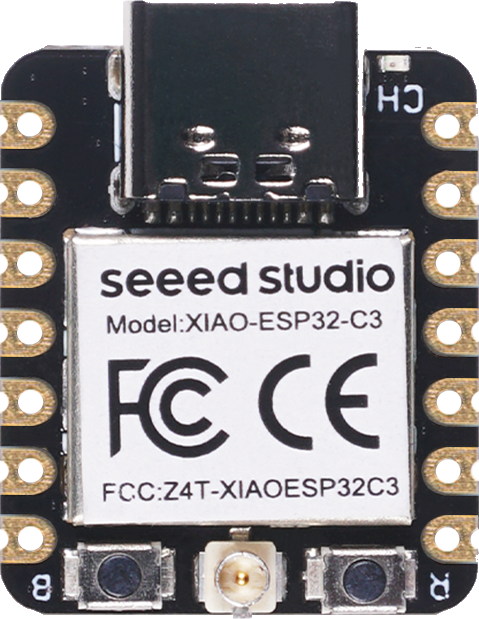
 Design with Seeed Studio XIAO ESP32C3 in Cirkit Designer
Design with Seeed Studio XIAO ESP32C3 in Cirkit DesignerIntroduction
The Seeed Studio XIAO ESP32C3 is a compact and powerful microcontroller board based on the ESP32-C3 chip. It features built-in Wi-Fi and Bluetooth Low Energy (BLE) capabilities, making it an excellent choice for IoT (Internet of Things) applications, wearable devices, and other embedded projects. Its small form factor and low power consumption make it ideal for space-constrained designs.
Explore Projects Built with Seeed Studio XIAO ESP32C3
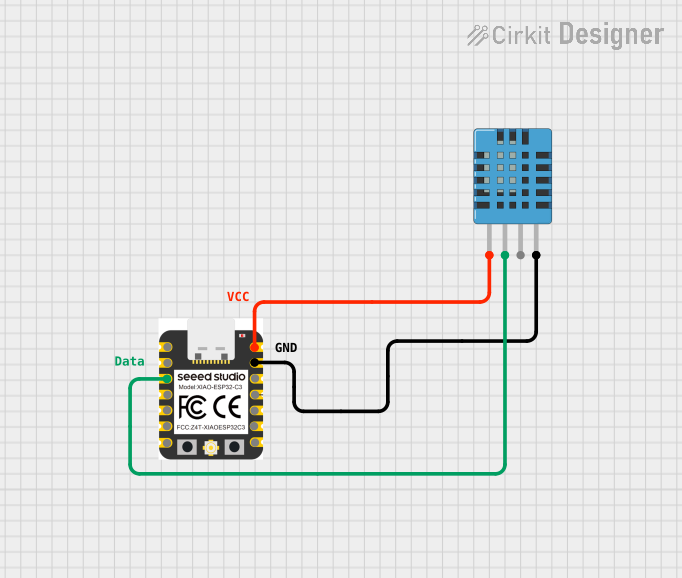
 Open Project in Cirkit Designer
Open Project in Cirkit Designer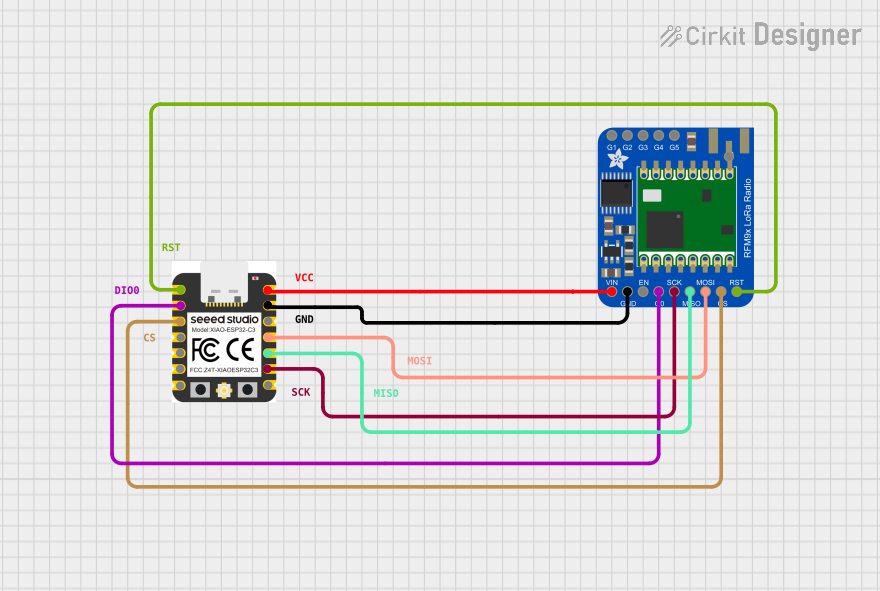
 Open Project in Cirkit Designer
Open Project in Cirkit Designer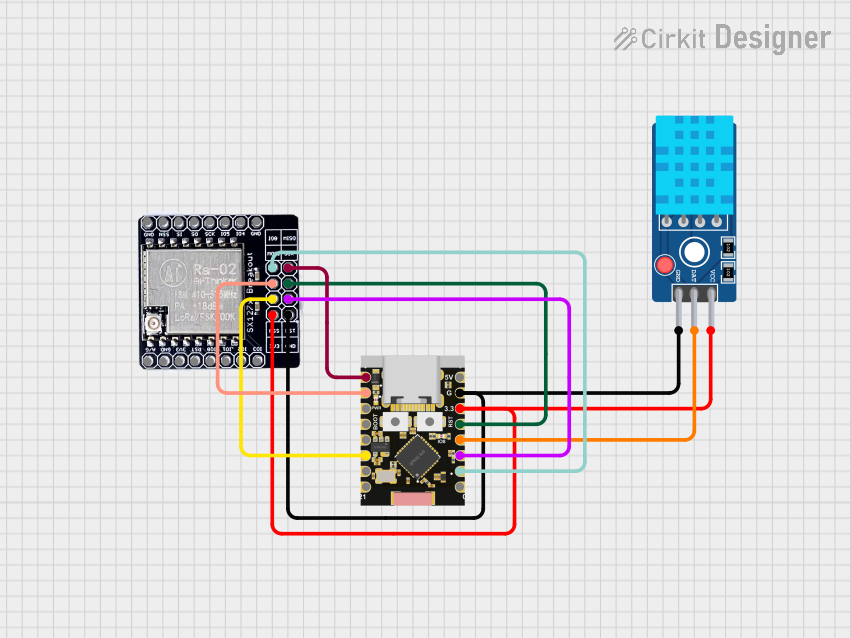
 Open Project in Cirkit Designer
Open Project in Cirkit Designer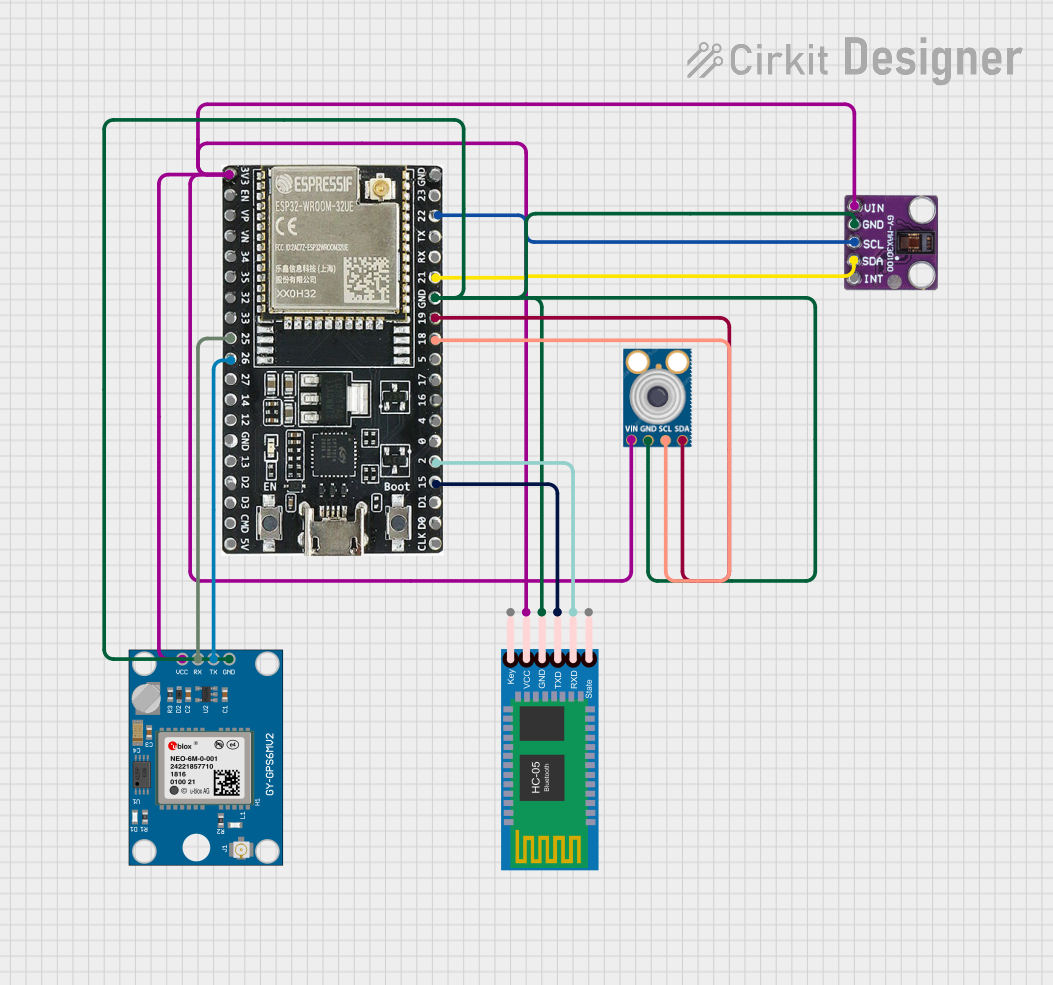
 Open Project in Cirkit Designer
Open Project in Cirkit DesignerExplore Projects Built with Seeed Studio XIAO ESP32C3

 Open Project in Cirkit Designer
Open Project in Cirkit Designer
 Open Project in Cirkit Designer
Open Project in Cirkit Designer
 Open Project in Cirkit Designer
Open Project in Cirkit Designer
 Open Project in Cirkit Designer
Open Project in Cirkit DesignerCommon Applications and Use Cases
- IoT devices and smart home automation
- Wearable electronics
- Wireless sensor networks
- Prototyping and development of Bluetooth and Wi-Fi-enabled projects
- Low-power embedded systems
Technical Specifications
The following table outlines the key technical details of the Seeed Studio XIAO ESP32C3:
| Parameter | Specification |
|---|---|
| Microcontroller | ESP32-C3 (RISC-V single-core processor) |
| Clock Speed | Up to 160 MHz |
| Flash Memory | 4 MB |
| SRAM | 400 KB |
| Wireless Connectivity | Wi-Fi 802.11 b/g/n, Bluetooth 5.0 (LE) |
| Operating Voltage | 3.3V |
| Input Voltage Range | 5V (via USB-C) |
| GPIO Pins | 11 (including ADC, PWM, I2C, SPI, UART) |
| ADC Resolution | 12-bit |
| Dimensions | 21 x 17.5 mm |
| Weight | 3g |
Pin Configuration and Descriptions
The XIAO ESP32C3 has a total of 11 GPIO pins, each with multiple functions. The pinout and descriptions are as follows:
| Pin | Name | Function(s) | Description |
|---|---|---|---|
| 1 | 3V3 | Power | 3.3V output |
| 2 | GND | Ground | Ground connection |
| 3 | D0 | GPIO0, ADC0, UART TX | General-purpose I/O, ADC, UART transmit |
| 4 | D1 | GPIO1, ADC1, UART RX | General-purpose I/O, ADC, UART receive |
| 5 | D2 | GPIO2, I2C SDA | General-purpose I/O, I2C data line |
| 6 | D3 | GPIO3, I2C SCL | General-purpose I/O, I2C clock line |
| 7 | D4 | GPIO4, PWM | General-purpose I/O, PWM output |
| 8 | D5 | GPIO5, SPI SCK | General-purpose I/O, SPI clock |
| 9 | D6 | GPIO6, SPI MISO | General-purpose I/O, SPI data in |
| 10 | D7 | GPIO7, SPI MOSI | General-purpose I/O, SPI data out |
| 11 | RST | Reset | Reset the microcontroller |
Usage Instructions
How to Use the XIAO ESP32C3 in a Circuit
Powering the Board:
- The XIAO ESP32C3 can be powered via the USB-C connector (5V input) or through the 3V3 pin.
- Ensure the input voltage does not exceed the specified range to avoid damaging the board.
Connecting Peripherals:
- Use the GPIO pins to connect sensors, actuators, or other peripherals.
- For analog sensors, connect them to the ADC pins (e.g., D0 or D1).
- For I2C devices, use D2 (SDA) and D3 (SCL).
Programming the Board:
- The XIAO ESP32C3 is compatible with the Arduino IDE, PlatformIO, and ESP-IDF.
- Install the necessary board support package (BSP) for the ESP32-C3 in your development environment.
Uploading Code:
- Connect the board to your computer via USB-C.
- Select the correct board and port in your IDE, then upload your code.
Important Considerations and Best Practices
- Voltage Levels: Ensure all connected peripherals operate at 3.3V logic levels to avoid damaging the GPIO pins.
- Wi-Fi and BLE Usage: When using wireless features, ensure the board is in an area with minimal interference for optimal performance.
- Heat Management: Although the board is efficient, prolonged use of Wi-Fi or BLE may generate heat. Ensure proper ventilation if used in an enclosure.
Example Code for Arduino IDE
The following example demonstrates how to connect the XIAO ESP32C3 to a Wi-Fi network and blink an LED:
#include <WiFi.h> // Include the Wi-Fi library
// Replace with your network credentials
const char* ssid = "Your_SSID";
const char* password = "Your_PASSWORD";
void setup() {
pinMode(LED_BUILTIN, OUTPUT); // Set the built-in LED pin as output
Serial.begin(115200); // Initialize serial communication
// Connect to Wi-Fi
Serial.print("Connecting to Wi-Fi");
WiFi.begin(ssid, password);
while (WiFi.status() != WL_CONNECTED) {
delay(500);
Serial.print(".");
}
Serial.println("\nConnected to Wi-Fi!");
}
void loop() {
digitalWrite(LED_BUILTIN, HIGH); // Turn the LED on
delay(1000); // Wait for 1 second
digitalWrite(LED_BUILTIN, LOW); // Turn the LED off
delay(1000); // Wait for 1 second
}
Troubleshooting and FAQs
Common Issues and Solutions
The board is not detected by the computer:
- Ensure the USB-C cable is a data cable, not a charge-only cable.
- Check if the correct drivers for the ESP32-C3 are installed on your computer.
Wi-Fi connection fails:
- Double-check the SSID and password in your code.
- Ensure the Wi-Fi network is within range and not using unsupported security protocols.
Code upload fails:
- Verify that the correct board and port are selected in the IDE.
- Press and hold the reset button while uploading to enter bootloader mode.
FAQs
Q: Can I power the board with a battery?
A: Yes, you can use a 3.7V LiPo battery connected to the 3V3 pin, but ensure proper regulation.Q: Does the board support OTA (Over-The-Air) updates?
A: Yes, the ESP32-C3 supports OTA updates, which can be implemented in your code.Q: Can I use the board with MicroPython?
A: Yes, the XIAO ESP32C3 is compatible with MicroPython. You can flash the MicroPython firmware to the board.
This concludes the documentation for the Seeed Studio XIAO ESP32C3. For further assistance, refer to the official Seeed Studio documentation or community forums.